We explain what the celestial bodies are and the characteristics of planets, stars, constellations, nebulae, comets and more.

What are the celestial bodies?
The celestial bodies are all natural objects that are part of the universe and that they can interact with another body, due to the force of gravity (orbiting or being orbited).
In cases where there is no influence of gravity, the celestial body is considered a "wandering body" that wanders through the space, without orbiting around any star.
Planets
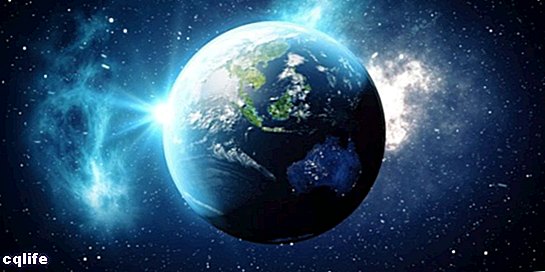
Planets are celestial bodies that revolve around a star, as the Earth, Mars, Jupiter, etc. and that they make a movement of translation around the Sun, always counterclockwise. The planets also perform a movement of rotation which consists of rotating on its own axis.
Planets differ from stars, because the latter have a greater amount of mass (density). For that reason, the planets cannot carry out thermonuclear fusion processes that would allow them to emit light own, as the stars do. The planets only reflect the light they receive from the luminous star they orbit.
In addition to their density, they differ from other celestial bodies by their size, since their diameter must be greater than 1,000 kilometers. Bodies with similar characteristics but smaller in size can be, for example, asteroids. The planets are usually surrounded by atmospheric gaseous layers of varying density.
Stars

Stars are celestial bodies that represent huge engines of Energy cosmic and producing heat, light and radiation (such as ultraviolet rays and X-rays).
They were formed by the condensation hydrogen and cosmic dust, and are capable of radiating their own light through nuclear fusion reactions. They must have a minimum amount of mass so that the conditions of temperature and of Pressure unleash in those reactions.
Stars live for billions of years and, in general, the larger they are, the closer they are to extinction. They are very varied in size and are classified in a range from "dwarfs" to "supergiants" (which can have a diameter 500 times that of the Sun). The life cycle of a star can be summarized as follows:
- New star. After millions of years after the gas cloud became large enough and began to contract, nuclear fusion begins in which hydrogen is converted to helium. The contraction stops and the star emerges.
- Red giant. It is the stage in which the star becomes larger and begins to consume its fuel. A slow process is triggered in which it contracts, a lot of heat is generated (especially in the core of the star) and by burning the last available fuel, the star is extinguished.
- Nebula planetary. It is the stage when the extinct star begins to shed layers because it cannot contain them anymore. The center of the star becomes a "white dwarf" (extremely dense star) and, once it has used up all its energy, it stops shining and becomes a "black dwarf".
- Supernova. When the instance of a "planetary nebula" occurs with stars of a very large size (for example, 40 times the size of the Sun), it is called a "supernova". The layer shedding stage of the star is called a "neutron star." When the star stops shining, they can become a "black hole" in space.
Constellations
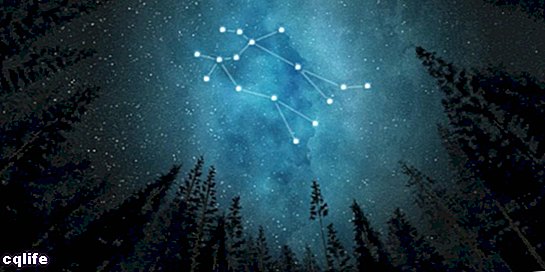
Constellations are groups of stars that have an imaginary shape in the night sky and are devised by the human. They are usually named in terms of the Greek mythologyFor example, the constellation Orion whose name refers to a hunter, and Andromeda whose name corresponds to a maiden.
The stars that make up a constellation are not necessarily associated by their location, that is, they can be hundreds of light years away from each other. The fact that they form a group is arbitrary, in fact, between the different cultures they have devised different constellations linking only some of the stars.
The zodiac (a word of Greek origin that means "circle of animals") is a strip in space where the Sun and the planets pass. This strip is located around the "celestial equator" (which corresponds to an imaginary projection of the Earth's equator line in space).
It is divided into twelve equal parts, each one representing a different figure: Aries, Taurus, Gemini, Cancer, Leo, Virgo, Libra, Scorpius, Sagittarius, Capricornus, Aquarius and Pisces. Hence the name "zodiacal constellations".
Nebulae
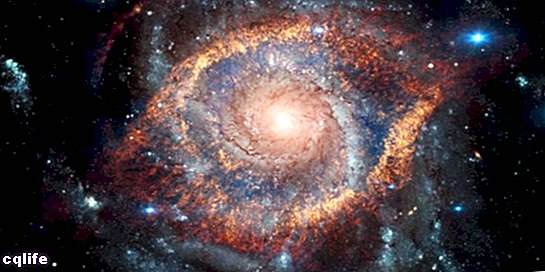
The nebulae They are concentrations of gas in which hydrogen, helium and stellar dust predominate, which are widely dispersed, but due to the force of gravity they can join to form a group. The larger the nebula, the greater the force of gravity it develops.
Nebulae are crucial for the universe because stars are born within them, from the condensation and aggregation of the matter. There are also other nebulae that are made up of the remains of extinct stars.
In its final stage, the group of gases and dust becomes so large that it collapses of its own accord. gravity. That collapse causes the material in the center of the cloud to heat up until the core begins a new star.
Nebulae are distributed throughout space, among stars and other celestial bodies. The best-known nebula is called "Helix" and it is made up of the remnant of an extinct star and may have been similar to the Sun. It is located about 700 light years from Earth.
Natural satellites

The natural satellites they are solid celestial bodies that orbit around a larger object. The bodies that orbit the planets are called "moons."
Although its composition is somewhat uncertain, several moons made up of rocky sediments and ice, among other elements, have been detected. The planets can have different amounts of moons between them, with the exception of the Earth that only has one and Mercury and Venus that are not known moons until now.
Natural satellites originate from various processes. Some, passing near the orbit of the planet, were captured and attracted by its gravitational force. Others originated from clouds of gas and dust that formed around a planet as a result of the detachment caused by a collision between a asteroid and a planet.
Kites
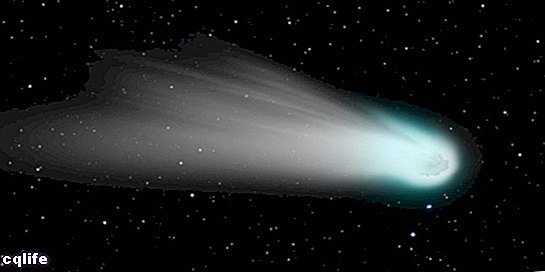
Comets are remnants that come from the beginning of the Solar system, about 4.6 billion years ago. They consist of ice structures covered with organic material. They may be able to provide data relevant to the formation of the Solar System.
Some theories assume that comets brought water and other organic compounds (essential elements for the life) to Earth when it was not yet a planet, but was in its initial stage of formation.
Comets are characterized by having a visible trail that is made up of dust and plasma (ionized gas). Most travel at a safe and distant distance from the Sun, however, some have crashed into the bright star or passed so close that they broke apart and evaporated.
Comets' orbit is constantly changing. It originates in the region of the outer planets and is often affected or influenced by these larger planets. Some comets end in orbits close to the Sun and others are sent out of the Solar System.
Meteors
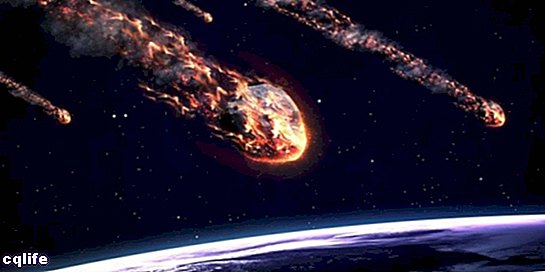
Meteors are luminous celestial bodies that are formed when meteoroids (solid bodies from space) enter the Earth's atmosphere and, as a result of friction, burn through the high atmospheric layers, disintegrating before reaching the planet's surface.
Meteors travel at high speed and leave a trail (sometimes persistent). That is why they are often called "shooting stars" but they should not be confused with stars. They differ from comets because they do not penetrate the Earth's atmosphere, while meteors do.
According to current terminology, they are distinguished as follows:
- Meteoroid. They are particles of dust and ice left behind by comets, or from debris during the formation of the Solar System.
- Meteor. They are luminous phenomena made up of meteoroids that manage to cross the Earth's atmosphere and disintegrate before hitting the surface.
- Meteorite. They are the meteoroids that cross the Earth's atmosphere, but that reach the surface of the planet because their large size does not allow the passage through the atmospheric layers to disintegrate it completely.
